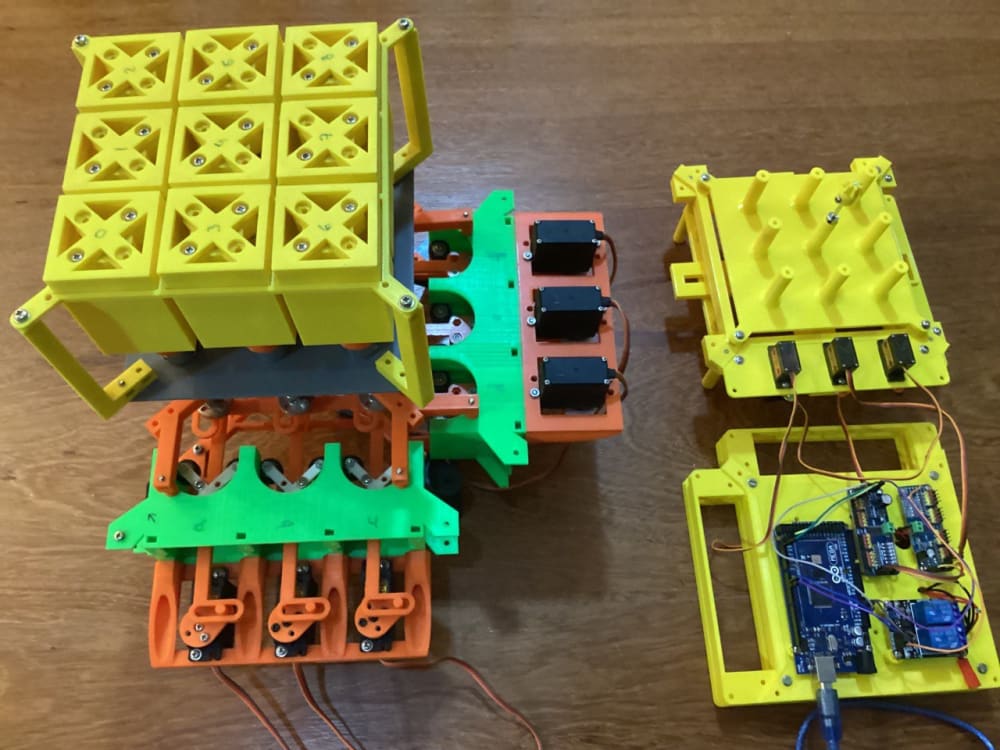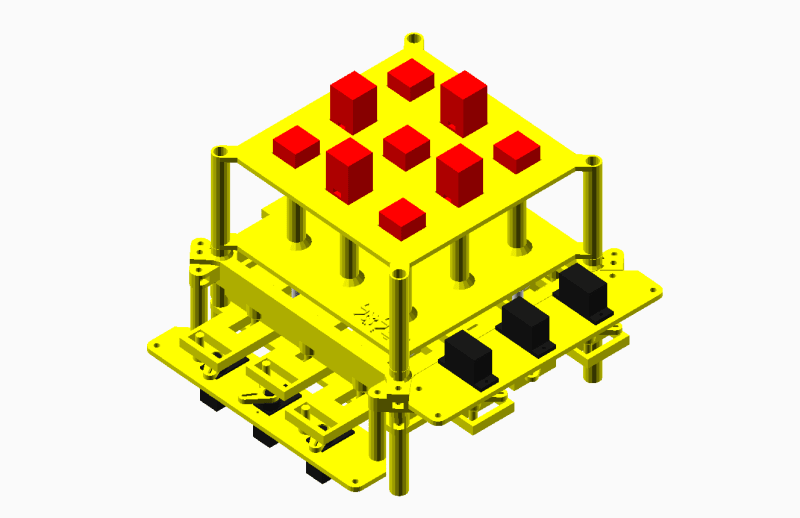
Tactile interaction can be considered the next frontier for human-computer interaction. A generic approach to converting digital information into tactile information is to manufacture matrices of driven pins that function as “tactile pixels”. Unfortunately, the manufacturing costs behind such matrices are typically very high.
We designed a novel approach with the goal of enabling such matrices to be manufactured at home with a low cost. We provide an open-source 3D printable device that demonstrates our novel approach.
The key innovation of our approach is the mechanical multiplexing strategy that makes the solution remarkably efficient and scalable when compared to alternative strategies.
Our approach demands only one actuator for each row, and one actuator for each column to actuate the whole matrix. Our efficient multiplexing strategy ensures that the time needed to refresh the whole display is proportional to the square root of the number of pins in the worst-case scenario.
We expect our open-source 3D printable model to evolve while also circumventing the typically high manufacturing costs of traditional manufacturing strategies.
We envision exciting applications to our solution in the near future, including the creation of interfaces to support augmented reality applications. We also expect affordable matrices with smaller pins to expand the range of work, education and leisure activities performed by blind individuals because certain types of information cannot be effectively conveyed through sound. For instance: maps and illustrations.
Our 3D printable model demonstrates the strategy as a matrix containing 9 pins.
Sliding structures that move orthogonally to each other are used to promote the rotation of cranks. While one structure determines the sine of the angle of the crank, the other structure determines the cosine of the same angle.
Given that multiple angles can have the same sine or the same cosine, the same sliding structure can simultaneously actuate cranks that rotate in different directions: while some cranks rotate clockwise, other cranks rotate counterclockwise and other cranks rotate back and forth.
With this we create a matrix of actuated rotary structures. If a crank is connected to a threaded rod, its rotation can be used to promote the vertical translation of vertical structures. The solution can be creatively adapted to create multiple types of displays.
We invite you to download and adapt our open source 3D printable model:
https://github.com/pedrosacramento/bezalel/tree/master/create-the-future-design-contest-2023
Video
-
Awards
-
 2023 Top 100 Entries
2023 Top 100 Entries
Like this entry?
-
About the Entrant
- Name:Pedro De Almeida Sacramento
- Type of entry:individual
- Software used for this entry:OpenSCAD and Blender
- Patent status:pending





